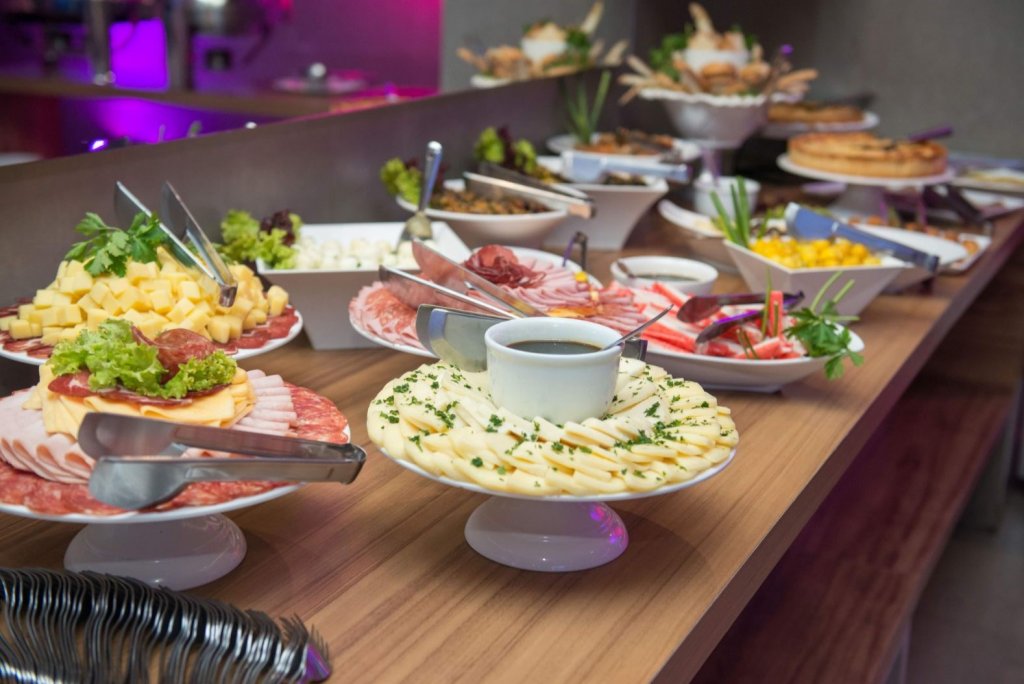A funeral reception or repast is an excellent way to continue the celebration of life for the deceased and offer some closure to friends and relatives over food. The meal may be for everyone at the service or just immediate family. It should include personal touches that represent the deceased loved one.
After the funeral or memorial service that accompanies the burial or cremation, your loved one has been finally put to rest. Family and friends may still be processing their loss, and just going home may not feel right. A reception after the services gives mourners a congenial atmosphere for remembering the departed over a meal.
Originally called a “repast” that was served to a small group, the funeral reception may include everyone at the service or just the immediate family and close friends. While it may primarily focus on the meal, modern receptions often continue as a celebration of the life of the deceased with music, pictures, and memorabilia.
Funerals these days are less traditional than in the past and often reflect the personal touches of the person who has died. Many who preplan their funeral arrangements indicate how they want their “after-party” to be structured.

Table of Contents
Who Organizes The Post-Funeral Reception?
Planning a post-funeral reception ultimately falls in the hands of the family. However, many families have plenty of help waiting in the wings to assist.
Many churches have bereavement societies or women’s groups that offer help and support to a grieving family that includes feeding the family on the day of the funeral service. Such groups might send over a deli tray, stage a potluck, or, more likely, coordinate a meal with their volunteers that provides everything from appetizers to dessert. Sisters A, B, and C may be asked to bring a chicken dish, while others are assigned to bring sides, rolls, salads, desserts, or beverages. They usually serve the meal in the church hall but can bring the food to another location if the family desires it.
Alternatively, a family member or close friend may host the event, either at a private home or other venue. Even if the family pays for the reception, having someone else organize it, serve the food or keep the serving plates full if food is served buffet style, and manage the clean-up will take the day-of burden off the family.
Whoever organizes the event should plan an event in line with what the departed would have liked.
Who Provides The Food For The Meal?
When friends, relatives, neighbors, or colleagues die, people instinctively know that the spouse and immediate family are deep in grief as they make arrangements for the funeral or end-of-life celebration. They may offer cash contributions and a meal or a dessert to relieve the family from thinking about meal planning and have food on hand for mourners who stop by. Volunteers may also supply some of the food for the reception.
It usually falls on the family to pay for the reception, perhaps with donations or funds from the deceased’s estate.

Where Will The Funeral Reception Be Held?
The church, rented hall, or a private home are common locations for a reception, but there are many other options.
Most funeral homes offer an after-service luncheon that provides a convenient venue for gathering after the service. The flowers and memory boards may already be there, so the atmosphere is set without transporting personalized items. Most funeral homes work with professional caterers but may have staff on hand to serve the food, clean up afterward, and wrap up the leftovers for the family to take home. The funeral director can discuss the option offered at the funeral home.
Depending on the number of people in attendance, a restaurant the deceased loved might be a fitting location. The wait staff may even be able to share a memory if the departed came there often. A limited-option or fixed meal choice or a buffet might work well while keeping the costs reasonable.
The family might opt for a barbeque or picnic, a day at a theme park, a pool party, or an outing to a museum if these types of outings were things the deceased loved.
What Type of Refreshments Are Served At The Repast?
Serving a full meal is not required at a funeral reception. Funerals that involve service and burial at multiple locations take up a good portion of a day, so offering a satisfying repast is a considerate touch.
The menu for a full meal might include sandwiches or a main dish with salad, rolls, fruit and vegetable trays, cookie and brownie trays, and beverages and be served individually or buffet-style. The food items can be homemade or ordered from a deli, caterer, or restaurant.
If the deceased loved a particular cuisine or food item, a personalized menu could both feed the guests and pay tribute to the departed guest of honor.
To cut down the cost of funeral reception food, you can limit the offering to beverages, finger foods, and desserts. Having enough food for those expected is important, so if money is an issue, aim for a lighter spread.

Turning The Post-Funeral Reception Into A Personalized Celebration of Life
The funeral reception may be the last time that a particular grouping of family, friends, and colleagues might be together to honor the deceased. Personalizing the event will offer closure to those gathered there. Some ways to do so include:
- Serve favorite foods the deceased loved.
- Consider decorating the hall in colors the deceased loved or with centerpieces that include their favorite flowers.
- Compile pictures on a memory board.
- Set out some of the deceased’s favorite things, such as a trophy, concert tee shirt, book, map showing their travels, or other favorite items on a memory table.
- Play background music from artists the loved one enjoyed.
- Arrange a group activity such as a candle lighting ceremony or toast to the deceased.
- Make it participatory with an open microphone so that guests can share stories or memories of the departed. Or have them write a favorite memory and drop it in a jar.
- Create a tribute video to display during the reception. You can even ask guests in advance to forward pictures or videos they might have on their phone from the deceased.
- Provide visitors with a keepsake such as a prayer card, memorial card, or DVD to take with them.
Any of these expressions of love will make the day an excellent tribute to the life your loved one lived. See our article 40 Funeral Ideas Worth Considering: Religious, Creative, Thematic, & More for more ideas.
Tips For Planning A Funeral Reception
- Ask for help. The cost of the food, venue, and help usually falls on the family, but another friend or relative might be willing to coordinate the event if you ask.
- Pick a location that is convenient for you or that was meaningful to the deceased. An avid churchgoer might love to have their church and natural family gather in the church hall, while others might prefer a small gathering at a favorite restaurant.
- Keep the plans simple if that’s what you want. There is nothing wrong with including just close family and friends in the gathering.
- Personalize the gathering with photos and memorabilia. Many people post these on a whiteboard for the wake, so the picture boards can easily be transported to the reception.
- Arrange the reception the way you want in a manner the deceased would have liked.
- You needn’t serve a full course meal. If you are opening the reception to anyone at the service, you might offer desserts and beverages there and offer more substantial food to those invited back to the house.
- Don’t turn down offers of help. The family has a lot on their plate after the death, so if someone is willing to help out with the reception, graciously accept.
- Non-traditional locations can make excellent venues for the reception.
- Serving alcohol is unnecessary as this increases the cost of the event. Some venues may not permit it. If you want to toast the departed over a favorite bourbon, the family might do this at home.
- Personalize the event so that is a fitting send-off for the deceased and loving memory for the family.

